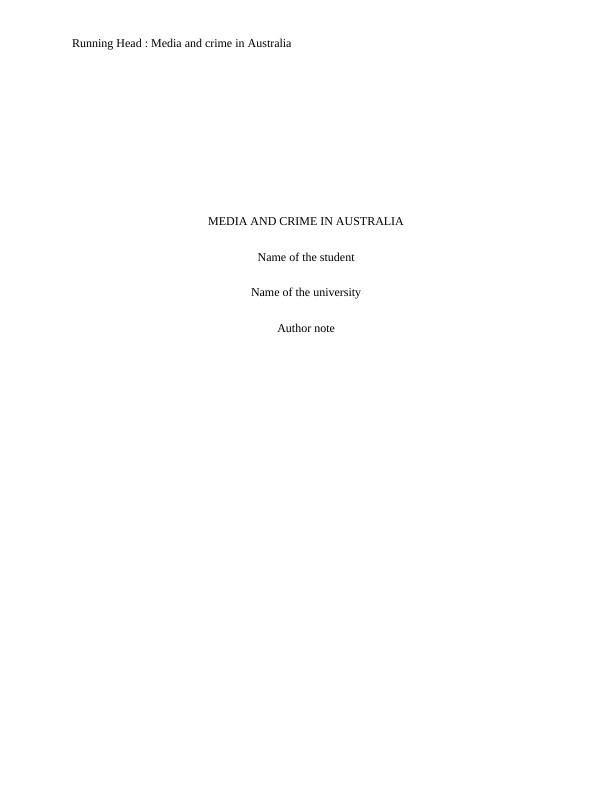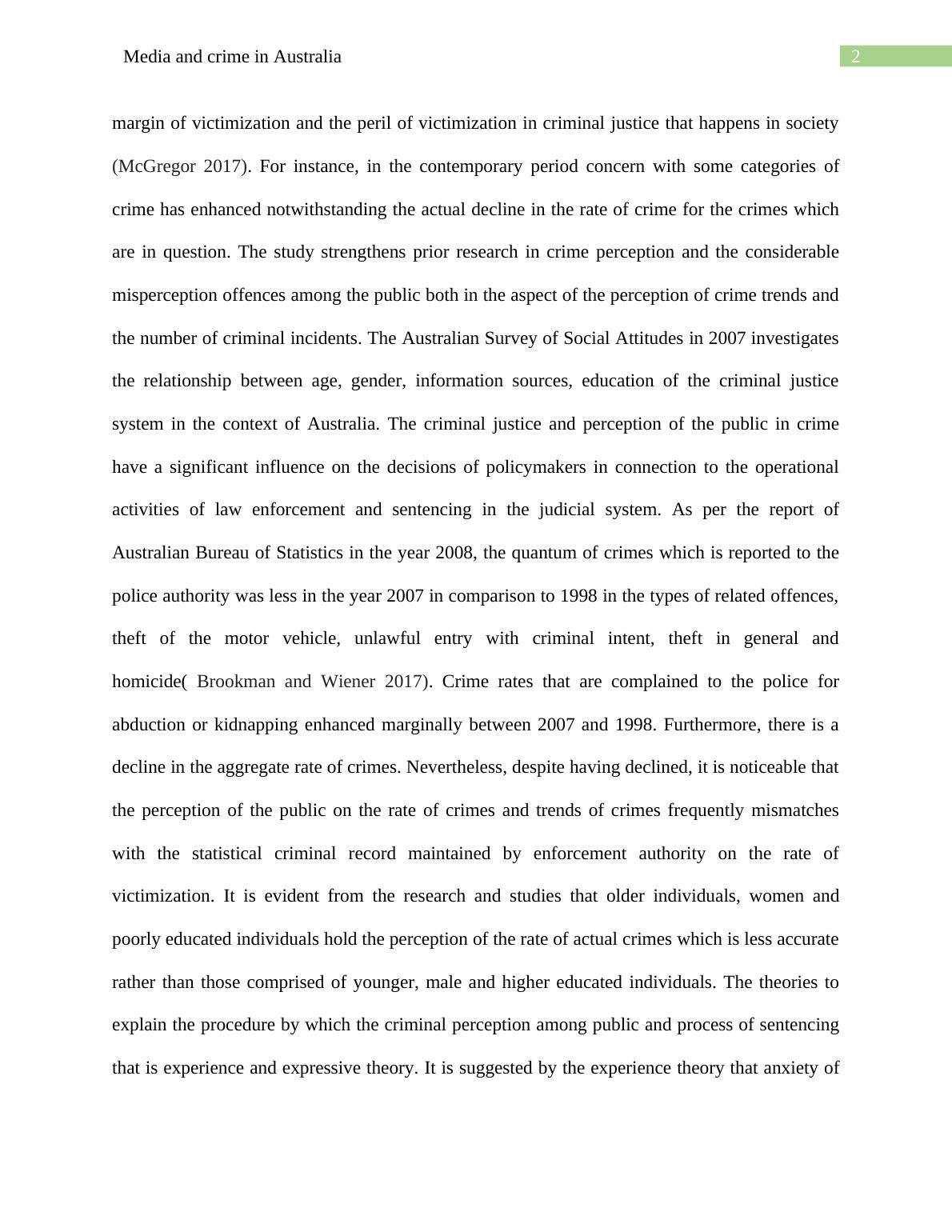Media And Crime In Australia
Assessment 3 is an essay assignment in the field of Criminal Justice, focusing on the role of media in influencing public perceptions of crime, the criminal justice process, and criminal justice policy. The assignment requires the use of 'media + crime' literature and contemporary examples to support arguments. The marking criteria/rubric assesses engagement with the topic, evidence of research, academic literacy and presentation, referencing, and word limit adherence.
Added on 2022-08-17
Media And Crime In Australia
Assessment 3 is an essay assignment in the field of Criminal Justice, focusing on the role of media in influencing public perceptions of crime, the criminal justice process, and criminal justice policy. The assignment requires the use of 'media + crime' literature and contemporary examples to support arguments. The marking criteria/rubric assesses engagement with the topic, evidence of research, academic literacy and presentation, referencing, and word limit adherence.
Added on 2022-08-17
End of preview
Want to access all the pages? Upload your documents or become a member.



